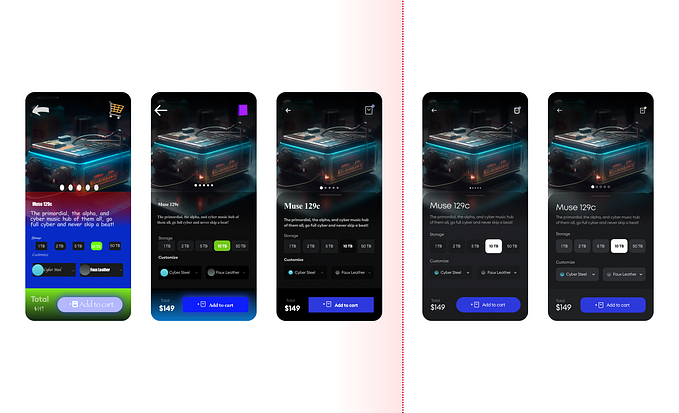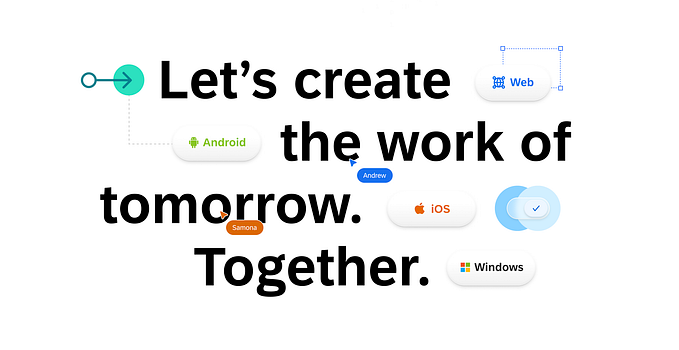4 psychology principles every UX/UI designer should know
When designing a product, it’s important to know what type of response you want to elicit from your users. Understanding psychology principles can influence human behavior and create a more seamless experience for your users.

1. Hick’s Law
The time it takes to make a decision increases with the number and complexity of choices.
This is perhaps one of the most straightforward psychological principles to grasp, yet one of the most important. When the user is given more choices, it requires them to think longer and increases the time it takes to make a decision. If the individual is overwhelmed with options, then they may resort to choosing nothing at all. However, as a UX Designer, it is your job to ensure this doesn’t happen.
Often, there is too much functionality crammed into a site, while the burden it places on the user is largely ignored. You can’t always eliminate all of the choices, but it is your job to breakdown the process and make the information easier to digest.
One way to mitigate this issue is by chunking complex items into smaller steps. For example, in a Navigation menu, you can group similar items under the same category.
Spotify is an example of a company that does a good job of decreasing decision-time for their users. Imagine being presented with every single song when you open your Spotify app. It would be incredibly overwhelming to choose a song, and not to mention, extremely time-consuming to sift through every option. However, Spotify does a great job of categorizing the “Browse” tab into various buckets.

The page is broken down by genres and distinct musical categories, which are then further divided into more specific groups. Even though Spotify is providing several songs to choose from, you never feel totally overwhelmed because the clear hierarchy and levels of separation. It is a logical and coherent experience clicking through the different buckets, which cuts down the time the user would take making a decision.
When designing a website, app, or any product, it’s important to keep in mind how you are presenting options to your user. Ask yourself — is there is a way to strip it back to the essentials and create a less complex experience?
2. Cognitive Load
The total amount of mental effort being used in a person’s working memory.
Specifically, in UX, cognitive load refers to the amount of mental resources that is required to operate a user interface. Similar to computers, our brains have limited capabilities when it comes to processing power. If you bombard users with information, their performance will likely suffer. Individuals may feel overwhelmed, confused, and ultimately abandon the task or site. In UX Design, the most relevant types of cognitive load are Intrinsic and Extraneous.
Intrinsic cognitive load: the difficulty associated with a specific instructional topic
This explains why copy is such a crucial part of the experience. Copy can make or break a design. The text needs to be concise, simple, and clearly stated. Using ambiguous language will make the experience confusing and difficult to navigate. It should be easy and effortless for users to follow the instructions or perform a task.
You can’t eliminate cognitive load completely, and you wouldn’t want to either because users come to a website in order to get information. You can, however, decrease or try to eliminate extraneous cognitive load.
Extraneous cognitive load: processing that takes up mental resources, but doesn’t actually help users understand the content
An example of this is when websites use multiple font sizes and weights, but they don’t each convey different meanings.
There are tactics that can help diminish extraneous cognitive load and create a more enjoyable experience for your user.
First, avoid visual clutter on the site or app. This includes elements such as, irrelevant images, redundant links, meaningless typography/graphic elements that are distracting. When used properly, links, imagery and typography are critical to a website, but when overused they can become a pain point. Mis-use of these design elements can impair usability and readability of the site.
Another method to get rid of extraneous cognitive load is to keep in mind the user’s existing mental models and to build on them. Based on past experiences, People have schemas and mental models regarding how websites work. If you use familiar layouts and elements on your site, then you will decrease the amount of learning the user has to do.
3. Von Restorff Effect
Also known as The Isolation Effect, predicts that when multiple similar objects are present, the one that differs from the rest is most likely to be remembered.
This principle explains why you want to make important actions distinct from other elements on the page. For example, CTAs should look different from the rest of the site. You want to make it easy for users to distinguish between other items and the primary CTA. You can make an element visually distinctive by changing size, shape, color, padding, etc.
An example of this is when websites display subscription models or pricing. DropBox Business does a nice job of showcasing the most valuable pricing option to the user. The design changes are subtle, such as a dark-blue CTA, compared to a white CTA on the other options.

The entire box is also highlighted with a light-blue background and darker blue on the header. You will also notice the “Best Value” flag displayed at the top. While none of these design choices are bold or distracting, they do clearly show the most logical choice for the user. This option will probably be seen first and remembered the best out of all three choices.
4. Serial Position Effect
Users have a propensity to best remember the first and last items in a series.
Serial Position Effect involves two main concepts:
The Primacy Effect: Items that are presented at the beginning of a list are recalled with greater accuracy than items in the middle of a list.
The Recency Effect: Items that appear at the end of a list are also more likely to elicit better recall than items presented in the middle of a list.
With these two ideas in mind, you can apply these concepts to your designs. One way to do this is to limit the amount of recall required. The human short-term memory can only maintain around 5 items at a time. Therefore, you should make sure users are given less than 5 items at a time. This will increase the likelihood that the most relevant information is retained.

Adidas does a nice job of executing this by providing all the filters that are applied when a user is browsing clothing. They take it one step further and provide breadcrumbs at the top of the page, so a user never has to remember where they are in the experience or the route they took to get there.
Key Takeaways
There are several psychology principles that apply to the field of UX Design. Most of these are fairly straightforward and you may already be applying them to your designs without even knowing it. However, the reason it’s important to understand these ideas is so you can explain the meaning behind your designs, especially when presenting to stakeholders. It is also essential that you understand how a user feels and why they act a certain way. This will give reasoning and substance to your designs and ensure you are producing a valuable experience for your user.









